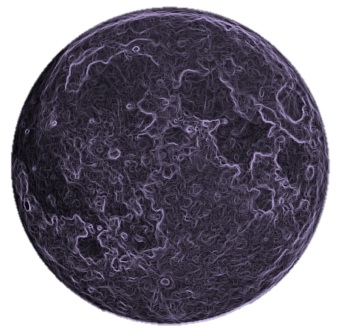 BLUE MOONS
BLUE MOONS
We often use the term ‘once in a blue moon’ to describe a situation or event that is rare. But where did this saying come from ?
We metaphorically use this expression of BLUE MOON as it relates to one of the following lunar events:
1. A month in which there are 2 Full Moons. A calendar month usually has 1 Full Moon, but where a 2nd Full Moon occurs within the month this is called a BLUE MOON. This is the most popular definition of a BLUE MOON.
2. The 3rd Full Moon in a season of 4 Full Moons. There are usually 3 Full Moons within a season, but where a season contains 4 Full Moons, the 3rd of 4 Full Moons is called a BLUE MOON. Note that a season is defined as the time period between a solstice & equinox or equinox & solstice.
Whilst the term ‘once in a blue moon’ doesn’t really relate to the colour of moon, the moon can take on a blueish appearance at times due to changes in atmospheric conditions such as smokey haze or dust particles.
BLUE MOON – 2nd Full Moon in Calendar Month
How did the 2nd Full Moon in a Calendar Month come to be called a BLUE MOON ?
The March 1946 edition of Sky and Telescope magazine, contained an article by James Hugh Pruett entitled “Once in a Blue Moon”. In this article where he inadvertently misinterpreted/simplified the 1937 Maine Farmers Almanac definition of BLUE MOON: “Seven times in 19 years there were – and still are – 13 full moons in a year. This gives 11 months with one full moon each and one with two. This second in a month, so I interpret it, was called Blue Moon.” As a side note here, interestingly 1937 only had 12 full moons !
EarthSky’s Deborah Byrd happened upon a copy of this old 1946 issue of Sky and Telescope in the stacks of the Peridier Library at the University of Texas Astronomy Department in the late 1970s. Afterward, she began using the term Blue Moon to describe the second full moon in a calendar month on the radio. Later, this definition of Blue Moon was also popularized by a book for children by Margot McLoon-Basta and Alice Sigel, called “Kids’ World Almanac of Records and Facts,” published in New York by World Almanac Publications, in 1985. The second-full-moon-in-a-month definition was also used in the board game Trivial Pursuit.
Thus whilst this definition of BLUE MOON is not technically correct, it is the most popular definition and most commonly used.
BLUE MOON – 3rd of 4 Full Moons in a Season
Purists, swear by their definition of BLUE MOON being the third full moon of four in a season. The Maine Farmer’s Almanac defined a Blue Moon as an extra full moon that occurred in a season (and their definition of season related to winter, spring, fall, summer). A season normally has 3 full moons, however if there are 4 full moons in a season then the third full moon is called the BLUE MOON and the 4th moon is referred to as the last of that season.
Upcoming Blue Moons
The following details upcoming Bloom Moons over the next few years based on both definitions.
BLUE MOON – 2nd Full Moon in Calendar Month
- There are NO Blue Moons in 2017
- 31 January 2018
- 31 March 2018
- 31 October 2020
BLUE MOON – 3rd of 4 Full Moons in a Season
- 19 May 2019
 BLACK MOONS
BLACK MOONS
The term BLACK MOON is used by both astrologers and followers of Wicca term and relates to one of the following lunar events:
1. A month in which there are 2 New Moons. A calendar month usually has 1 New Moon, but where a 2nd New Moon occurs within the month this is called a BLACK MOON. This is the most popular definition of a BLACK MOON
2. The 3rd New Moon in a season of 4 New Moons. There are usually 3 New Moons within a season, but where a season contains 4 New Moons, the 3rd of 4 New Moons is called a BLACK MOON. Note that a season is defined as the time period between a solstice & equinox or equinox & solstice.
3. A month in which there is no New Moon. The only calendar month where this can occur is February and hence Jan/March would have 2 New Moons (instead of the usual 1 New Moon).
4. A month in which there is no Full Moon. The only calendar month where this can occur is February and hence Jan/March would have 2 Full Moons (instead of the usual 1 Full Moon). The next Black Moon month will be in February 2018.
A New Moon is a great time to set your intentions, write down goals or begin new projects for the forthcoming cycle. In addition a BLACK NEW MOON is an auspicious moon that amplifies your intentions & inner-most heartfelt desires for the cycle. It is a powerful New Moon for alchemy and creative manifestation.
Here are a list of BLACK MOONS coming up over the next couple of years
- 22 August 2017 – Third New Moon in a season of 4 new Moons
- February 2018 – Calendar month without a Full Moon
- 30 August 2019 – Second New Moon in August
- 19 August 2020 – Third New Moon in a season of 4 new Moons
Check the Time & Date of BLACK MOONS in your area of the world >
OmAhOm
xx Simone







